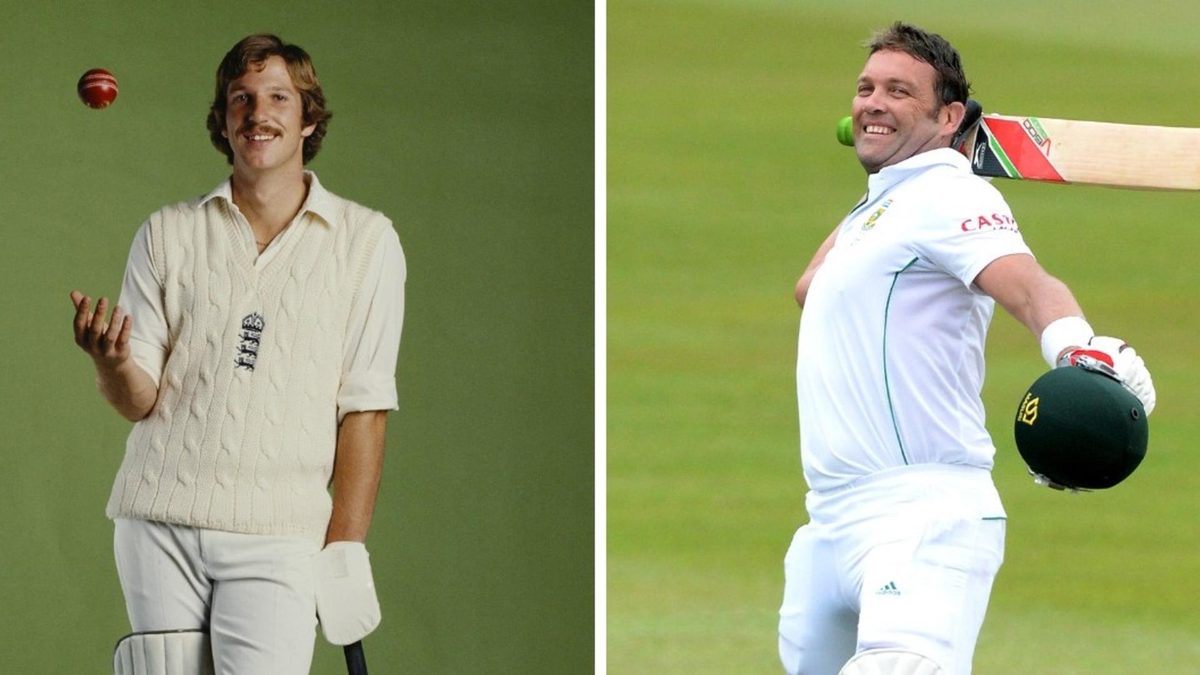
Having a quality all-rounder is every team's dream, and these players set the benchmark: here's recalling the best Test all-rounders there have been, based strictly on the ICC all-time rankings.
As is widely known, the ICC rankings are a points-based system used to evaluate a player's current form, rated from 0 to 1,000. The ratings have been extended to historically evaluate cricketers too: on that parameter, the all-time ICC rankings have seen only ten all-rounders cross 500 rating points.
It is to be noted that the list is based solely on the ICC rankings algorithm, which doesn't involve any subjective calculation or manual input.
1. Garry Sobers
669 v India (1967)
No better name than Garry Sobers to start off this list. He was the top-ranked all-rounder uninterrupted from 1962 to 1974, roughly 60 per cent of his career. Among all batters in Test history with 8,000 runs, no one averages higher (57.78). With the same cutoff, only he and Jacques Kallis took 200+ wickets. No one else even has 100. And he did that bowling both seam and spin.
2. Ian Botham
647 v India (1980)
Arguably England’s most influential cricketer ever, Ian Botham was ranked No.1 from 1978 to 1983, briefly reclaiming the spot a year later. With a 5,000 run cutoff, no one took more five-fors (27) among all-rounders, and only one (Kapil Dev) took more wickets.
3. Jacques Kallis
616 v Pakistan (2002)
Statistically the most decorated all-rounder ever, Jacques Kallis first topped the rankings in 2000 and kept that spot for most of the next decade. One of only three players to cross the 600-mark, he is among the top five Test run-getters of all time, and the only cricketer ever with the triple of 10,000 runs, 100 wickets and 100 catches.
4. Keith Miller
573 v West Indies (1952)
It is not hard to say Keith Miller was Australia’s first great all-rounder, and a crowd-pleaser at that. Since Miller, no Australian has hit a hundred and taken a six-for in the same Test; nor does anyone have both five centuries and five five-fors. Be it sharing the new ball with Ray Lindwall, or taking charge in the middle order, Miller’s legacy is far-reaching.
5. Richie Benaud
532 v Pakistan (1959)
Only three Australians have the double of 2,000 runs and 200 wickets. Only one of them has a Test hundred (three, in fact). Shane Warne once called Benaud the “godfather of legspin”, with only him and Nathan Lyon taking more Test wickets among Australian spinners. From 1958 to 1960, he was the top-ranked all-rounder, and was quite effective on tours to India, South Africa and Pakistan.
6. Imran Khan
517 v India (1983)
The gold standard of all-rounders in Pakistan, Imran Khan retired as the top-ranked all-rounder in the world in 1992. He first topped the charts in 1983, going on to take 362 Test wickets, the most for Pakistan before Wasim Akram and Waqar Younis came about. A reliable middle-order batter, he hit six tons: among all those who took as many Test wickets as him, only three players scored more Test runs.
7. Tony Greig
509 v New Zealand (1975)
Through the 1970s, few matched Tony Greig’s all-round brilliance. Greig hit centuries in the West Indies and India against strong bowling attacks, and took six six-wicket hauls (with both seam and spin). He took at least a four-for in every country he played, including 13 wickets in a Test against a star-studded West Indies in 1974. From that year until his last Test in 1977, Greig was the top-ranked all-rounder, uninterrupted.
8. Andrew Flintoff
501 v Pakistan (2005)
Andrew Flintoff’s magnificence wasn’t as much in the overall numbers, but the moments of unmatched brilliance he provided. Until his maiden century in 2002, he averaged 14 with the bat and in the mid-40s with the ball from 12 Tests. By 2004, he was among the top five all-rounders in the world, staying there for the next half a decade. One of the key figures in their 2005 and 2009 Ashes wins, Flintoff could have been a lot more, if not for injuries.
9. Aubrey Faulkner
500 v Australia (1911)
One of the early exponents of the googly in Test cricket, Faulkner was arguably the greatest pre-War all-rounder. His unconventional batting was devastating against Australia, and his bowling was just as deadly against England. The year 1910 stood out, where he averaged 66 (including a double-century in Australia) and took 32 wickets in seven games. From that year until 1912, he was the top-ranked all-rounder in the world.
10. Chris Cairns
500 v Zimbabwe (2000)
New Zealand grew many all-rounders through the 1990s and 2000s, but Chris Cairns truly fit the definition. For fifteen years, Cairns was a prominent part of the pace attack and a middle-order bruiser who could shift gears with ease (he broke Viv Richards’ then record for most Test sixes). Among New Zealand players, only two others did the double of 3,000 runs and 200 Test wickets. Barring India, he took a five-for in all six nations he played in, and was among the top five ranked all-rounders from 1997 until 2004.
Note:
Kapil Dev, Richard Hadlee and Shaun Pollock, three of the finest all-rounders, did not make the cut. Kapil's best rating was 433 (v Australia, 1981); Hadlee's, 483 (v Sri Lanka, 1987); and Pollock’s, 490 (v England, 2003). Among contemporary Test cricketers, Ravindra Jadeja's best has been 475 (v Bangladesh, 2024), while Ben Stokes very narrowly misses out with a peak of 498 (v West Indies, 2020). It is not clear whether Shakib Al Hasan has retired from the format: he had a best of 489 (v Australia, 2017).
Follow Wisden for all cricket updates, including live scores, match stats, quizzes and more. Stay up to date with the latest cricket news, player updates, team standings, match highlights, video analysis and live match odds.







